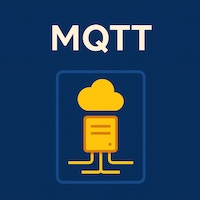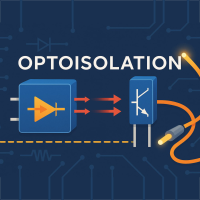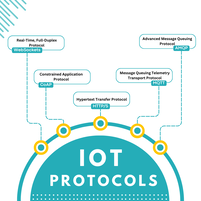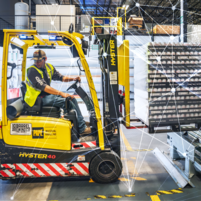IoT in Telecom Industry

As the digital revolution has progressed, the concept of the Internet of Things has become more commonplace. The opposite is true: these technological practices are now commonplace and are continuously evolving and improving.
Across the world, businesses of all sizes are aggressively adopting IoT solutions. IoT has played an increasingly important role in the telecom business over the last several years, and this trend is expected to continue. The current value of the worldwide IoT industry is around $389 billion, and experts predict that by 2030, it will have grown to more than $1 trillion. The number of connected devices worldwide is also expected to expand by a factor of three over this period.
Seventy-one percent of IT and telecommunications organizations have used IoT in the last several years, which is rising. The growth in the telecom industry reflects the widespread interest in and use of the Internet of Things. Also, how far along are you in using IoT solutions?
The Telecom Industry with the Internet of Things: A Bright Future?
In reality, telecommunications strategies based on the Internet of Things have been radically altering the landscape's topology, giving rise to an altogether new universe. By the year 2025, it is expected that there will be 38.6 billion IoT devices in use around the world. Telecommunications companies should now take advantage of the prospects given by this innovative sector, which is at the forefront of technical development.
The Internet of Things will completely change the telecom industry and provide several advantages to telecom providers. Telecommunications service providers' roles will likely continue to evolve as the Internet of Things makes it feasible for more and more devices to connect. Consequently, telecommunications service providers must develop novel Internet of Things solutions for their customers.
Everything around us is becoming smarter, more interconnected, and able to talk to one another thanks to the Internet of Things. One of its most significant features is the ability to automate business procedures. As such, it aids in creating a next-generation communication network predicated on 5G and designed to meet business needs. 5G, the following network being developed by the telecoms industry, will make it possible to employ cutting-edge Internet of Things products in various industries thanks to the introduction of novel approaches.
In linking billions of devices and data sets across the world, the Internet of Things successfully builds a bridge between the digital and physical realms. This provides an opportunity for telecoms firms to revamp their operations, grow their customer bases, and establish themselves as industry leaders.
Telecom Sector Internet of Things Applications
The term "practical leveraging of Internet of Things technology" has a specific meaning in the context of the telecoms industry: it describes the process of altering the function of mobile network providers in keeping users and their gadgets linked. Therefore, businesses must adopt IoT-based solutions if they want to see an improvement in their operations. Network operators may use the progress made possible by the Internet of Things in several ways.
IoT Connectivity Providers
Providing connection services to customers with IoT devices is one of the first and most essential alternatives accessible to telecom carriers for adopting the Internet of Things. Even though customers are responsible for storing and processing data produced by IoT devices, telecom providers now provide a connectivity platform for IoT that handles device management and enhances the quality of the customer's infrastructure's connection to the telecom network. IoT data is stored on the customer's end. However, this is still a problem.
Data Analyses
Analytics, when coupled with data supplied by the Internet of Things devices and reinforced with algorithms based on artificial intelligence and machine learning, makes it much simpler to track user behavior. With this information, telecom companies may diagnose and create forecasting models to foresee both near- and far-term trends and insights.
Suppliers of Geographic Information Systems
Improved and more accurate location services are a crucial component of smart cities, and mobile networks and IoT sensors help make that a reality. Not only do proximity sensors have the capacity to communicate data among IoT applications in telecom, but other types of sensors can. These Internet of Things sensors may be integrated into the design of public transportation networks to help passengers choose the most expedient routes, pinpoint the stations nearest to their current location, and make real-time transit decisions. In addition, smartphones with proximity sensors integrated may track people's movements, pinpoint their exact locations, and connect with strangers in crowded situations.
Driverless Vehicles
Connected vehicles, autonomous vehicles, and the automotive infrastructure are some of the most promising areas for the Internet of Things and fifth-generation mobile technology. For completely autonomous cars to exist, the world around them must be wired with sensors that send and receive data in real time. This will provide trustworthy and secure driving conditions.
Controlling and Keeping an Eye on Machines
Advancements facilitate communication between people in various regions of the world in telecommunications, enabling businesses to tap into global markets. The equipment must be in working order at all times, function flawlessly around the clock, and have any problems fixed immediately. However, pinpointing the origin of significant delays or malfunctions in a system is not always a simple matter.
Warning System
Any number of things may go wrong with the transmission of communications, not only hardware failure. One of the other significant threats that telecoms must respond to quickly is their lack of control over global catastrophes. This is because losing command might cause expensive machinery to break. Thanks to the Internet of Things, communication service providers can efficiently manage facilities, track issues, and identify crises before they cause widespread damage. If anything goes wrong, the operators can shut off the machinery before it entirely breaks down. One of the most excellent strategies to avoid experiencing catastrophic and irretrievable losses is to take preventative action.
Security
Taking adequate precautions to prevent theft is especially important in off-site sites, where expensive and necessary equipment is more likely to be targeted. Consequently, the telecommunications industry is responsible for implementing highly reliable and long-lasting security solutions. Smart cameras powered by the Internet of Things (IoT) stand out as the best way to protect people and property. These cameras can keep an eye out for any suspicious activity and promptly alert the proper authorities.
Equipment for Tracking Manufacturing Processes
Businesses in the industrial sector are increasingly investing in IoT-connected solutions, which allow them to better manage their assets in real time, a trend that is being reflected in the telecoms industry.
Automatic neighbourhoods and homes
The role of telecommunications in the evolution of smart home and smart city technologies cannot be overstated. Narrowband IoT and 5G are at the forefront of this deployment. Here is an area of technology where the automation of systems may need the merging of mobile networks with the Internet of Things.
Healthcare Industry Commerce
According to projections, the healthcare IoT market will grow to about $180 billion by 2026. Therefore, this business represents one of the most cutting-edge and promising prospects in telecommunications. The expansion of available remote medical services is only one of how the Internet of Things facilitates better patient monitoring.
Conclusion
The Internet of Things is revolutionizing the telecommunications industry, significantly impacting all business processes. These technologies allow telcos to optimize operational efficiency, solve security issues, enhance speed, track and monitor, predict trends, expand the telecommunications ecosystem, and much more.
The IoT affects internal and external processes, improving customer satisfaction, enhancing the quality of service, creating new sources of income, increasing return on investment, and ultimately transforming traditional approaches in telecom.
Explore more
Need any help in IoT?
Need any help in IoT? An Atreyo expert identify the right solution for your needs.
If ready to talk to an Atreyo expert
Interested in IoT products? go to







